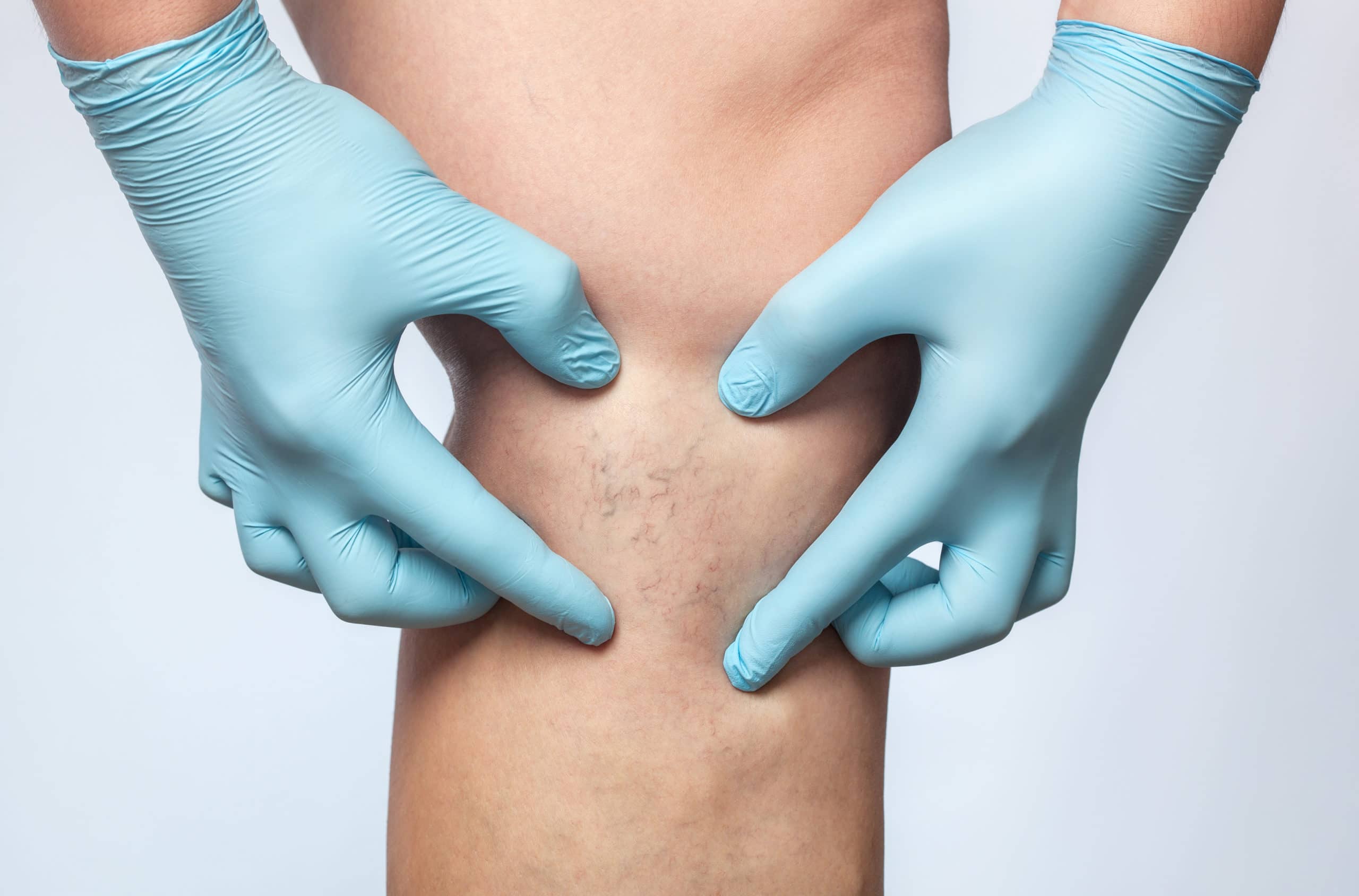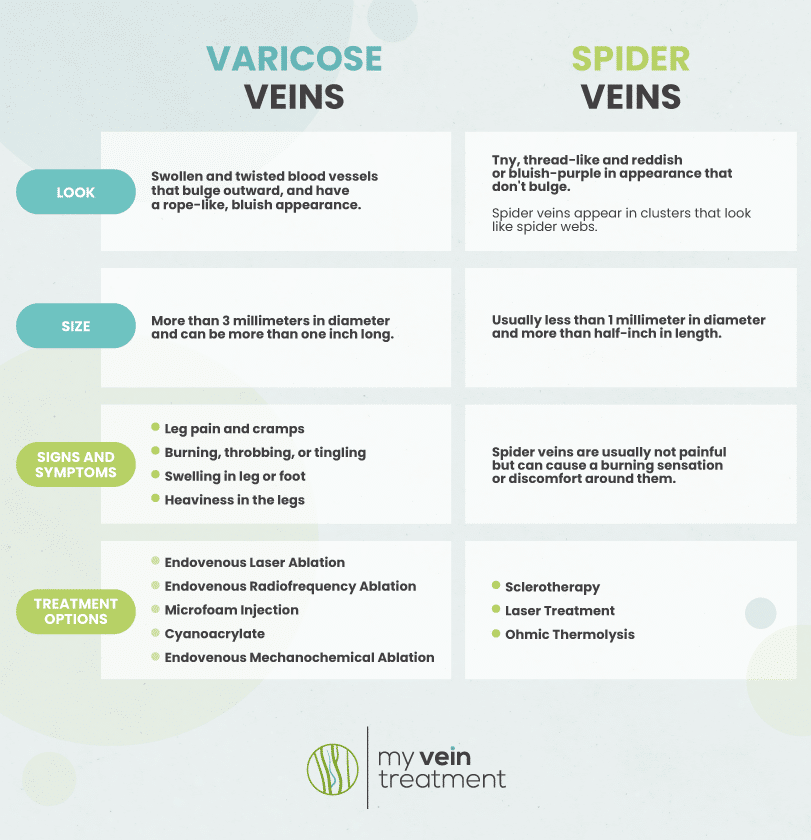If you have bulging, twisted, and painful leg veins, you may need vein removal treatment. Varicose veins appear when blood pools in the leg veins.…
Vein Surgery On Legs | Your Minimally Invasive Treatment Handbook

If you have bulging, twisted, and painful leg veins, you may need vein removal treatment. Varicose veins appear when blood pools in the leg veins. They look swollen and bluish. When they are tiny and web-like, they are called spider veins. Varicose veins, however, require treatment because, in some instances, they can affect vein health and cause complications like blood clots or leg ulcers. However, you are more likely to choose to treat spider veins for cosmetic reasons.
Different types of vein removal treatments are available. Vein surgery on legs (also called vein stripping) is an invasive treatment option. It involves the surgical removal of problematic veins. It can be extremely painful and has a long recovery period.
However, non-invasive treatments like laser therapy and minimally invasive treatments like vein ablation and sclerotherapy are simple procedures requiring no surgery. They also have a quick recovery time.
Non-invasive treatments are non-surgical procedures done without entering your body. Minimally invasive treatments are surgical procedures with limited, low-impact entry of the body. In minimally invasive treatments for varicose veins, your doctor will make a small incision in your skin, insert a catheter in your vein, and seal the vein to treat your varicose and spider veins. Most varicose vein removal treatments are minimally invasive.
Varicose Veins vs. Spider Veins

Varicose veins are swollen and twisted blood vessels that bulge outward. They have a rope-like, bluish appearance. Unlike spider veins, varicose veins are typically more than 3 millimeters in diameter and can be more than one inch long.
Signs and symptoms of varicose veins:
- Leg pain and cramps
- Burning, throbbing, or tingling
- Swelling in leg or foot
- Heaviness in the legs
Spider veins don’t bulge and are tiny, thread-like, and reddish or bluish-purple in appearance. They are usually less than 1 millimeter in diameter and more than half-inch in length. Spider veins appear in clusters that look like spider webs.
Spider veins are usually not painful but can cause a burning sensation or discomfort around them.
Varicose Vein Treatment Options
If you have varicose veins, your doctor will recommend the following minimally invasive vein removal treatments:
Endovenous Laser Ablation
This minimally invasive and almost painless procedure is also known as endovenous laser treatment. During treatment, your vein specialist will make a small incision in your skin and insert a catheter into your affected vein. The catheter has a laser attached to it. The laser emits heat energy that damages the walls of the vein and seals it shut. Your blood redirects into healthier veins once your doctor closes the damaged vein. The closed vein is absorbed by your body, making it disappear.
Endovenous Radiofrequency Ablation
Endovenous radiofrequency ablation treatment is similar to endovenous laser ablation. This treatment uses radiofrequency energy instead of laser energy to shut the damaged varicose vein. Your vein specialist will insert a catheter with a radiofrequency emitting electrode into the varicose vein. The targeted heat damages the inner lining of the vein and closes it. Your blood then reroutes into healthy veins. The varicose vein eventually disappears and improves the appearance of your legs.
Microfoam Injection
Under the brand name Varithena, this procedure is a non-thermal treatment. Unlike thermal ablation, microfoam injection treatments don’t require heat energy. This treatment method is a quick procedure with a lower risk of pain or soreness during recovery than thermal ablation.
For this procedure, your vein specialist will inject a chemical microfoam agent called polidocanol. This chemical enters the varicose vein, irritates it, and closes it, allowing your blood to flow into surrounding veins.
The procedure doesn’t require anesthesia. You can resume normal activities soon after the procedure.
Cyanoacrylate
Cyanoacrylate, or the brand name VenaSeal, is another minimally invasive varicose vein treatment that uses specially created medical glue to seal the damaged vein. The glue is safe for the body and has antimicrobial properties.
When the VenaSeal glue enters your varicose vein, the walls of the vein collapse and seal. The damaged vein hardens and is slowly absorbed into your body over time. This method reroutes your blood into healthy veins and restores normal blood circulation.
Endovenous Mechanochemical Ablation
This treatment is a chemical vein treatment. Your vein specialist will insert a rotating catheter into your defective vein and inject a chemical sclerosant to close the vein and restore healthy blood flow. Sclerosant means that the injection will cause irritation within the vein, followed by eventual healing. This method is a minimally invasive procedure that requires a small incision in your skin.
Spider Vein Treatment Options
If you have spider veins, your vein specialist will suggest the following treatment options:
Sclerotherapy
When your doctor performs sclerotherapy, they inject a sclerosant directly into the defective vein. Your vein doctor will inject this medication through a small needle to close the affected veins.
This quick procedure is minimally invasive, doesn’t require anesthesia, and has a fast recovery time. Sclerotherapy will improve the appearance of the treated area.
Laser Treatment
Laser treatment is an entirely non-invasive treatment, which is ideal for superficial spider veins that are less than 3 millimeters in diameter. Your doctor will place an intense beam of laser light is over the affected area. The laser emits energy that heats the problematic blood vessel and shuts it. This causes the vein to shrink, dry up, and slowly disappear as it is reabsorbed into the body.
This treatment takes approximately 20 minutes and can be easily done in a doctor’s office. It is painless, allowing patients to resume normal activities immediately after treatment.
Ohmic Thermolysis
This quick and innovative treatment, popularly known as VeinGogh, uses micro-bursts of high-frequency energy to eliminate spider veins. Your doctor will inject either a very thin needle or a probe to deliver bursts of energy into your vein. The treatment heats the vein and seals it shut. The vein then shrinks and disappears over time, improving the appearance of the treated area.
This process can treat small spider veins, as it is very precise and doesn’t affect the surrounding tissues.
Consult a Vein Specialist
Vein removal treatments are a great solution to get rid of painful or unsightly varicose and spider veins. The treatments are simple, speedy, and almost pain-free. In most cases, these non-invasive treatments are a better choice than undergoing vein surgery on legs.
If you have problematic veins, your first step to a solution is to consult a vein specialist. Seek their advice, as they can help you select a suitable treatment from the available options.
If you seek a vein specialist, try our vein specialist locator tool. Find a vein specialist near you and consult them to learn about the best treatment for your varicose or spider veins.






Responses